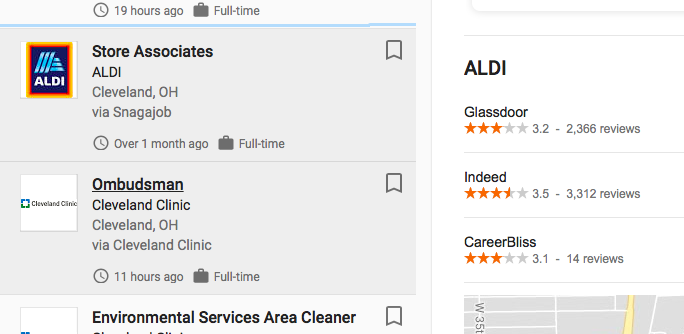Career-who?
It’s OK. The rise of Glassdoor and volume of reviews on Indeed have made the competition vying for real estate in the anonymous employee review space pretty obsolete. So, you’re forgiven for not caring about such PR bait like an annual listing of best and worst cities to work, which, by the way, does actually get the attention of most local news outlets.
Anyway, let’s get the actual news out of the way, because I’m sure you’re at least a bit curious, right? Your happiest cities include, in order from worst to best, Cleveland, Rockville, Santa Clara, San Jose, Redmond, Stamford, Richardson, Texas, Boulder, Detroit, and Mountain View. I’ve been to Detroit, and I can tell you it’s not the second-happiest place in the U.S., but that’s a different blog post.
The most miserable places to work, starting with No. 5 are Des Moines, Knoxville, Greensboro, Omaha, and St. Petersburg. Not sure why CareerBliss only publishes five most miserable places, especially since misery loves company, but there you go. Sorry, Des Moines.
“We are excited to recognize cities where employees are happiest around the country,” says chief happiness officer and cofounder, Heidi Golledge. “Cities are continuing to compete to bring companies such as Amazon to their cities to increase job opportunities and happiness for their residents. CareerBliss has also noted that when cities provide opportunities for higher education, personal growth, and year-round activities, they are more likely to have happier residents and employees.”
Now to why you should give a damn about a relatively these mostly meaningless lists: Google.
Historically, a site like CareerBliss only mattered if its site showed up when someone did a search on Google for what it’s like to work at your company, in search of juicy insight from actual employees. Thanks to Glassdoor and Indeed SEO, that mostly wasn’t a concern for most employers.
Then along came Google for Jobs.
In case you haven’t noticed, Big G is now pulling employee review content, mostly in the form of a five-star rating or fewer, when searches are done. In addition to pulling data from Glassdoor and Indeed, they’re also pulling from sites like, you guessed it, CareerBliss.

Other midlevel players, such as kununu and Comparably, are showing up in searches too, which means, well, people are going to visit those sites. More visitors means more awareness means more sharing means more reviews. You get the idea. Think monitoring these sites was challenging before? You ain’t see nothing yet.
So, yes, in previous years it was fine to ignore news releases from some site called CareerBliss, even if said “Best of” list didn’t even reveal companies or CEOs (at least Comparably does that) and opted for cities instead to troll local newspapers across the country for publicity. But today, you’d better pay attention if you care about your employer brand. And you know you do.
Thanks a lot, Google.
